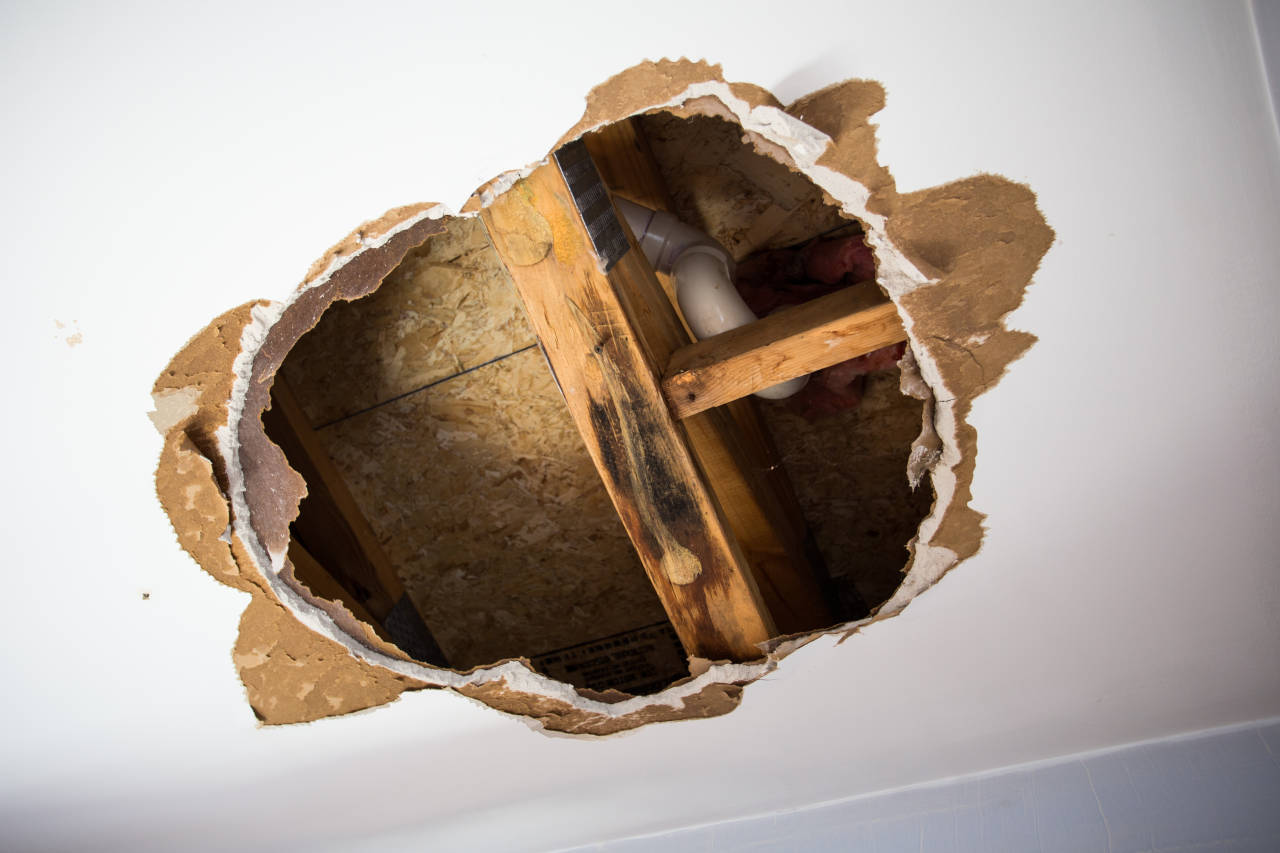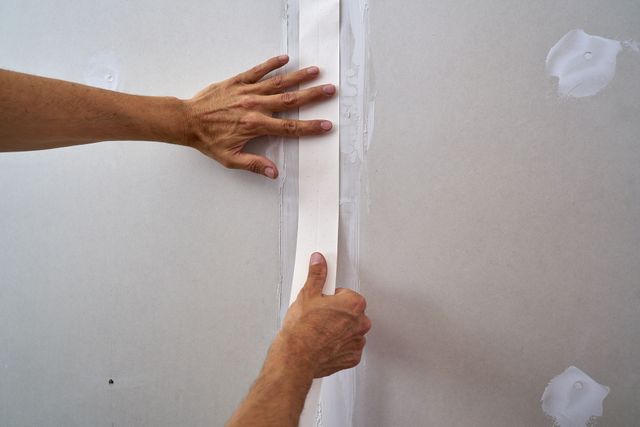Discover the most effective Practices for Effective Drywall Repair Work and Setup
The art of drywall repair service and installment calls for a mix of ability and accuracy. Mastering the important tools is necessary for accomplishing a seamless surface. Comprehending the detailed procedure can make a significant distinction in the result. Correct techniques for mudding and taping are additionally important. What remains is the knowledge of upkeep that ensures longevity. These aspects with each other create a sleek end result worth discovering better.
:strip_icc()/how-to-patch-drywall-gray-wall-aadf75af0f5d4ec19704a770bd84efc2.jpg)
Important Tools for Drywall Repair and Installment
When embarking on drywall repair and installment, having the right tools can greatly improve the efficiency and top quality of the work. An energy knife is crucial for cutting drywall sheets specifically, while a drywall saw can help in making more elaborate cuts. Taping blades, readily available in different sizes, are essential for applying joint compound efficiently and evenly. A drywall sander, ideally with a dust collection function, assists accomplish a polished finish, minimizing the need for extensive cleanup.
Additionally, a measuring tape assurances accurate measurements, and a degree guarantees that setups are straight and plumb. Safety and security equipment, including dust masks and safety glasses, must not be neglected to safeguard versus particles and dirt. A stud finder aids in situating mounting participants, ensuring safe setup. By gearing up oneself with these important tools, the repair and installment procedure ends up being extra workable and leads to a professional-quality outcome.

Step-by-Step Overview to Patching Holes
Covering openings in drywall calls for a systematic strategy to guarantee a seamless repair. First, the area around the hole have to be cleansed and any kind of loosened debris got rid of. For small holes, a putty knife can be made use of to apply a light-weight spackle, pressing it right into the hole and smoothing the surface. After it dries out, sanding is important to develop a flat coating. For larger openings, a spot of drywall may be essential. This includes reducing a piece of drywall a little bigger than the hole, safeguarding it to the wall surface with screws, and using joint compound to cover the joints. When the substance dries out, it must be sanded smooth. Lastly, priming the patched location prior to paint will ensure an also coating. Complying with these steps will lead to a professional-looking repair service that blends seamlessly with the surrounding wall.
Techniques for Seamless Drywall Installment
Attaining smooth drywall setup needs careful planning and implementation. It is essential to cut and measure drywall sheets precisely to decrease gaps. Using an utility knife, installers need to score the board before snapping it along the cut line, making certain clean edges. Appropriately straightening the sheets is vital; beginning from the leading and functioning down helps maintain uniformity.
Fastening drywall to the studs requires constant spacing, typically every 16 inches, using screws instead of nails for much better hold. This technique minimizes the danger of stands out in time. Furthermore, startling the seams between sheets improves architectural integrity and lowers the visibility of their website joints.
Making use of the ideal thickness of drywall for specific areas-- such as moisture-resistant kinds in restrooms-- more contributes to a flawless coating. Following these methods will lead to a professional-looking and smooth installation, establishing the stage for the succeeding finishing processes.
Finishing Touches: Taping and Mudding
Ending up touches, such as mudding and taping, play an important role in attaining a refined drywall surface. Insulation entails using a thin strip of drywall tape over the joints and joints, ensuring a seamless look. This procedure assists protect against cracks and creates a solid bond between drywall sheets. It is vital to choose the best type of tape, with paper and fiberglass mesh being the most typical options.
Mudding, or applying joint compound, complies with insulation. This substance completes spaces and smooths out the surface area for a consistent surface. It is normally applied in several layers, with each coat needing to completely dry before fining sand. Proper strategy includes feathering the sides to blend the compound right into the surrounding drywall, minimizing presence.
When completed properly, mudding and taping improve both the architectural and visual stability of the drywall setup, leading to a professional-quality coating.
Tips for Keeping Your Drywall After Installment

Additionally, keeping a constant indoor moisture level can protect against warping or mold and mildew growth. Making use of a dehumidifier in moist locations, like basements, is advisable. It's likewise beneficial to occasionally repaint locations that reveal wear, as this safeguards the underlying product. Lastly, when relocating furnishings or setting up fixtures, caution needs to be worked out to avoid damaging the drywall. By following these maintenance ideas, property owners can prolong the life of their drywall, guarding it remains an eye-catching feature of their interiors.
Regularly Asked Inquiries
What Safety Gear Is Needed for Drywall Fixing and Installation?
For drywall repair service and installment, important security equipment consists of safety and security goggles to shield eyes, dust masks to stop breathing of bits, handwear covers for hand defense, and knee pads for convenience throughout long term kneeling. Drywall Repair Ogden UT.
Exactly how Do I Establish the Drywall Density Needed for My Task?
To establish the drywall density required for a task, one need to consider the wall surface's architectural needs, neighborhood building regulations, and the planned use the area, commonly choosing 1/2-inch or 5/8-inch drywall.
Can I Repair Drywall Without Removing Furnishings From the Space?
Yes, drywall can be fixed without eliminating furniture from the space. Careful planning and protective steps can decrease mess, permitting effective repairs while keeping surrounding items risk-free from dust and damage during the process.
What Types of Drywall Are Finest for Various Atmospheres?
Moisture-resistant drywall navigate here is suitable for shower rooms and cooking areas, while soundproof drywall fits shared wall surfaces in homes. Fire-rated drywall is best for garages, and typical drywall works well as a whole living locations, ensuring sturdiness and suitability for various settings.
For how long Does It Take for Drywall Mud to Dry Completely?
Drywall mud commonly takes 24 to two days to dry completely, depending on variables like moisture and temperature (drywall contractor). Thicker applications may need longer drying out times, while thinner layers can dry out quicker. Correct ventilation aids drying out
The art of drywall repair service and installation calls for a mix of skill and accuracy. When embarking on drywall fixing and setup, having the right devices can significantly enhance the efficiency and top quality of the work. An utility blade is necessary for cutting drywall sheets specifically, while a drywall saw can assist in making extra elaborate cuts. Attaining seamless drywall installment demands cautious planning and execution. Moisture-resistant drywall is ideal for kitchens and shower rooms, while soundproof drywall matches shared walls in houses.